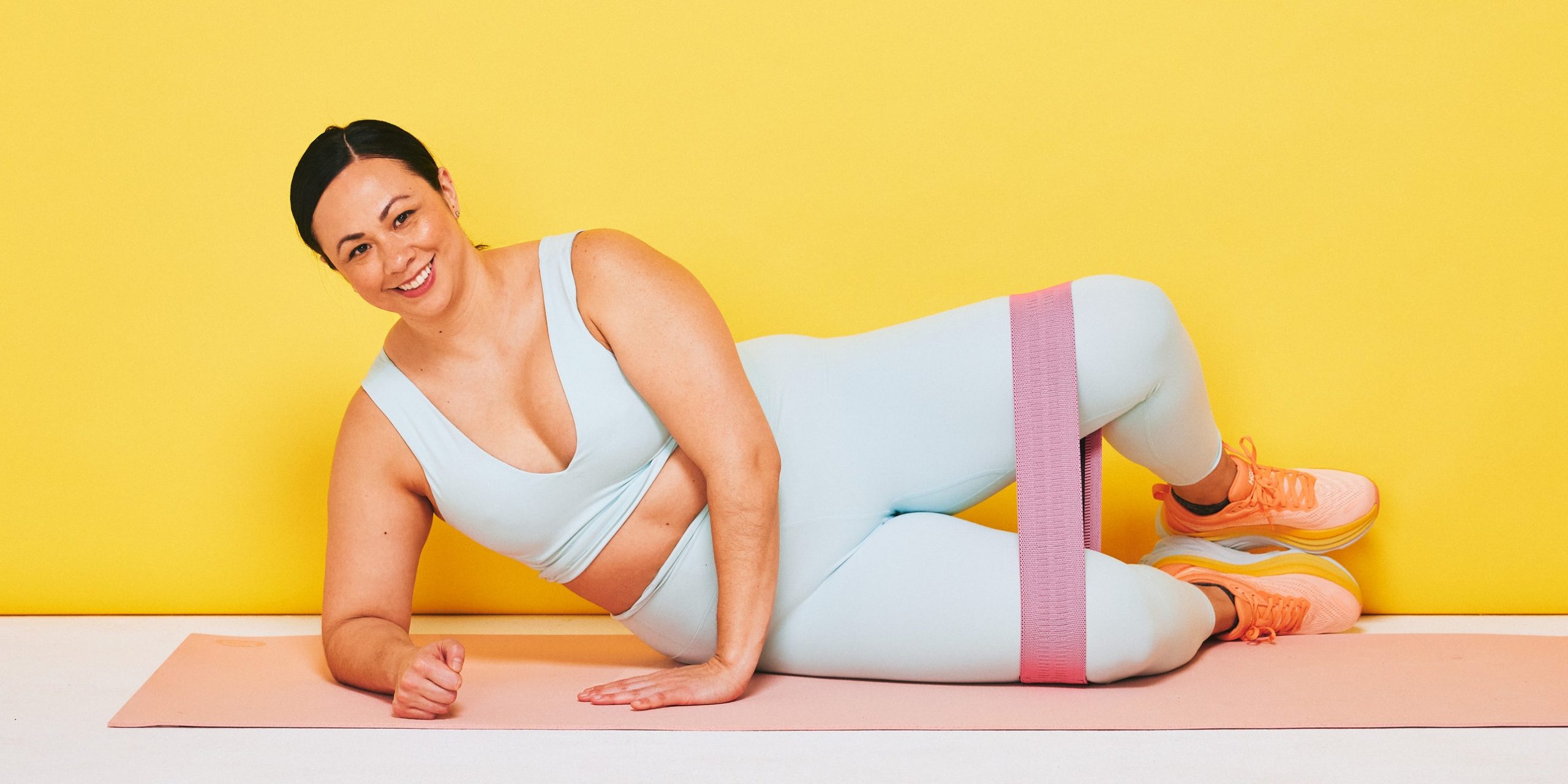Wellness
Strengthen Your Glutes with This Side-Butt Workout for Forgotten Muscles

When it comes to building strong and stable glutes, many people focus solely on the glute max, the largest muscle in the butt. However, the smaller muscles in the side butt, specifically the gluteus medius and gluteus minimus, play a crucial role in pelvic stability and hip abduction. These muscles help to keep your hips level and prevent them from dipping to one side during single-leg movements like lunging, walking, running, and climbing stairs. Weak side butt muscles can lead to compensatory movements and increased pressure on the knees, ankles, and lower back, potentially resulting in injuries.
Due to our sedentary lifestyles and lack of side-to-side movements, many people have weak side butt muscles. Sitting for long periods can tighten the hip flexors, weaken the glutes, and inhibit the activation of the side butt muscles. However, incorporating a side-butt workout into your routine can help strengthen and activate these important muscles. By targeting the glute medius and minimus through hip abduction and single-leg pelvic stability exercises, you can improve overall hip function and reduce the risk of injury during daily activities.
Amanda Ting, DPT, CSCS, a personal trainer at Mark Fisher Fitness in NYC, has created a five-move side-butt workout for SELF that specifically targets the glute medius and minimus. This circuit-style sequence includes exercises such as the banded clamshell, single-leg deadlift, fire hydrant, lateral band walks, and curtsy lunge. These exercises are designed to activate the side butt muscles through hip abduction and single-leg pelvic stability, helping to improve overall hip function and prevent muscle imbalances.
You can incorporate this side-butt workout into your routine by performing it before heavier lower-body lifts or including two to three exercises as part of your warm-up. By regularly engaging and strengthening the side butt muscles, you can enhance pelvic stability, improve hip function, and reduce the risk of injuries related to weak glute medius and minimus. Making time for these smaller but mighty muscles in your training regimen can lead to better overall movement patterns and performance in various activities that require single-leg stability and hip abduction.
Incorporating a side-butt workout into your routine can be beneficial for individuals of all fitness levels. Whether you are a beginner looking to improve hip stability or an experienced athlete aiming to prevent injuries, focusing on the glute medius and minimus can help enhance overall lower-body strength and function. By targeting these often-neglected muscles, you can promote better movement mechanics and reduce the risk of muscular imbalances that could potentially lead to pain or discomfort during physical activities.
Overall, prioritizing your side butt in your training regimen can lead to improved hip function, reduced risk of injuries, and enhanced overall lower-body strength. By incorporating exercises that target the glute medius and minimus, such as hip abduction and single-leg stability movements, you can optimize your pelvic stability and movement patterns. Whether you choose to include these exercises as part of your warm-up or dedicate a specific workout to your side butt, focusing on these important muscles can benefit your overall fitness and performance in various activities.

-

 News7 days ago
News7 days agoHave you experienced a ‘ghost poop’? Discover what doctors say about this bizarre phenomenon as TikTok users share videos of their puzzling experiences in the bathroom
-

 Wellness6 days ago
Wellness6 days agoThe Benefits of Knitting and Similar Hobbies: How They Can Help You Feel Calm, Focused, and Content
-

 Investing7 days ago
Investing7 days agoThese high-dividend stocks boosted the Dow to new levels. How would you have done if you invested in them and held onto them?
-

 Finance6 days ago
Finance6 days agoFrance seeks to establish itself as a major player in the global AI industry, with assistance from U.S. Big Tech companies
-

 News7 days ago
News7 days agoTrump Found Guilty in Fox News Politics
-

 News7 days ago
News7 days agoCohen believes that the Trump hush money verdict is ‘precisely what America needs at this moment’
-

 Sport7 days ago
Sport7 days agoChristian McCaffrey still haunted by costly fumble in Super Bowl, says 49ers star and coach
-

 News7 days ago
News7 days agoSupreme Court Unanimously Rules in Favor of NRA’s Free Speech Challenge in New York















